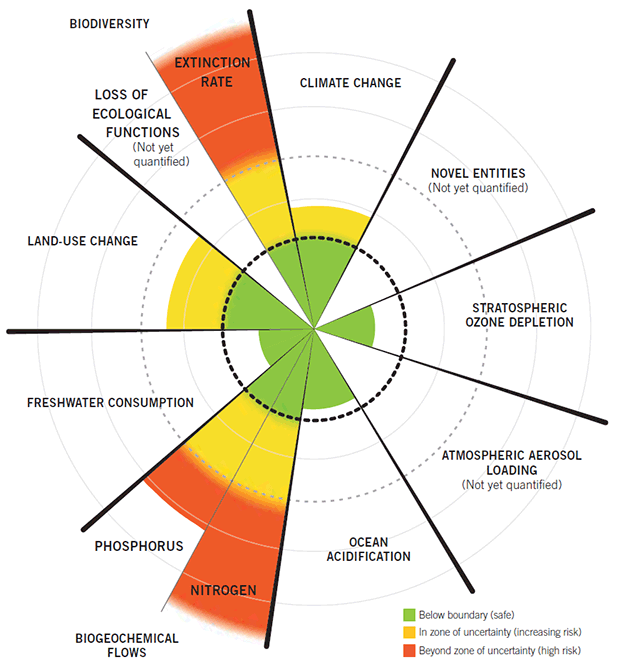Basic Concept
Global Commons: The stability and resilience of the Earth system in the Holocene
 The precondition for human civilization was the exceptionally stable and self-healing state of the Earth system during the Holocene, which began about 12,000 years ago. The stability and resilience of the Earth system in the Holocene is the most important common property that supports the sustainability of human society: the Global Commons.
The precondition for human civilization was the exceptionally stable and self-healing state of the Earth system during the Holocene, which began about 12,000 years ago. The stability and resilience of the Earth system in the Holocene is the most important common property that supports the sustainability of human society: the Global Commons.
The Global Commons is made up of a complex and exquisite balance between the circulation of materials and energy and biological activities, and once that balance is broken (when the tipping point is triggered), it is irreversibly damaged and will never recovered. This means that the sustainability of our society and economy will be lost forever.
The Planetary Boundary is the concept that identifies the critical nine Earth subsystems supporting the Global Commons balance and indicates their respective limit at which they will be compromised. Already, the boundaries have been transgressed seriously in biodiversity and nitrogen and phosphorus cycle, and climate change and land use change have entered the danger zone (see picture). The Global Commons is in serious crisis due to the massive emission of greenhouse gas and chemicals, development, and overexploitation caused by human activities, and the tipping point at which it will be permanently lost is just around the corner.
We must face up to such e nature of the Global Commons and its critical importance to humanity. Averting that crisis will require decarbonization, reducing chemical emissions, preserving forests and oceans, and removing any key environmental burdens that threaten the stability and self-recovery of our planet.
Global Commons Stewardship: socioeconomic system transformations
All of us must fulfill our responsibility to steward the Global Commons, the fundamental basis of sustainability of human society, for ourselves, our fellow human beings and future generations. This means fundamentally changing the current socioeconomic systems on a global scale that cause environmental burdens threatening the Global Commons.
The System Transformations that should be focused on include the following:
- Energy system:
Decarbonizing energy. - Food system:
Sustainable food production (transformation of land use, chemical fertilizers and pesticides use, fresh water use, fisheries resource management, etc.). Reduction and recycling of food waste, losses and excrement. Transition to diets with low environmental impact. - Production/consumption system:
Make the linear production/consumption system of resource extraction, processing, use, and disposal circular (shift to the circular economy). - Urban system:
In the urban area, transform the system of economic activities and life, and realize the three system transformations mentioned above.
These system transformations require the mobilization of a variety of social drivers (Action Levers). For example;
- Governance and policy:
Policies and decision-making processes suitable to protect the Global Commons are needed. This is where crosscutting multi-stakeholder coalition among diverse economic actors is effective. - Financial and economic system:
Market functions are extremely effective for system transformation. Particularly important are the mechanisms of goods markets that internalize environmental burdens (external economy) such as carbon pricing, and the functions of financial markets that encourage the allocation of resources to overcome the crisis. - Social harmony (inclusiveness, equity, fair transition):
Social harmony and trust are prerequisites for people from all walks of life around the world to work together for the common good of humanity, the Global Commons. - Trustworthy data and digital technology:
To facilitate right decision-making and effective action by all stakeholders, the information and data on which it is based must be reliable and transparent.
CGC will explore the potentials of these system transformations and social drivers, and collaborate with various stakeholders to realize them.

Note: The Global Commons is “Stability and Self-Resilience of the Earth System in the Holocene”, but here we present six key parts that support it.